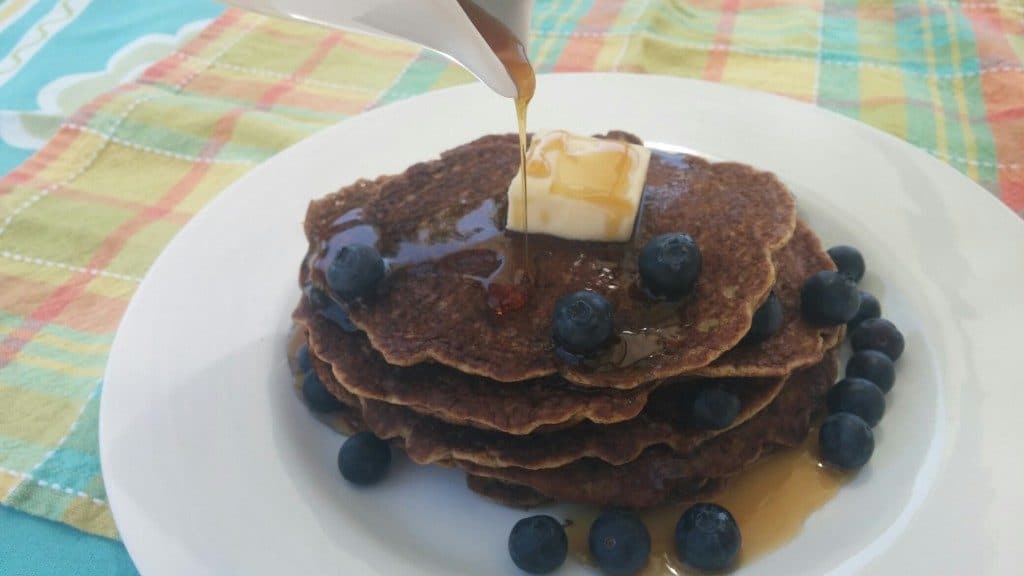At the start of adolescence I began my first job in a hip, made-from-scratch bakery. It was an experience that propelled me into my adoration for all things food, and made me truly appreciate the love, patience, and dedication that goes into preparing artisanal breads and pastries. I didn’t realize at the time, though, how utterly amazing the work of wild yeast fermentation was. Imagining it to be too finicky, time-consuming, and unpredictable, I steered clear of sourdough ever since. Well, I finally took the plunge and recently ventured into the scary, unknown world of true sourdough baking. And I’ve gratefully come to realize that working with wild yeast fermentation is much less daunting than I originally imagined.
Besides the tangy flavor it imparts, as well as the loft it gives to breads, there are some lesser-known, health-based reasons why you might want to consider incorporating sourdough goods into your diet. An established sourdough starter contains multiple strains of beneficial microbes, yeast strains, and bacteria that not only feed our gut flora but also deter bad bacteria and disease. These microorganisms constantly assist in the pre-digestion of starch, gluten, and phytic acid, which makes a product that our bodies can easier assimilate, and that can often be tolerated by those with gluten sensitivity.
One characteristic trait of sourdough starter is its propensity to multiply at an alarming rate. While it’s possible to hibernate it for prolonged periods of time, starter must be fed regularly to keep the bacterial cultures and yeasts alive and kicking. Thus with each feeding the starter grows larger. Unless you go through a loaf of bread a day, you’ll undoubtedly have a hard time keeping up with the supply. You’ll be leaving it on neighbor’s doorsteps before you know it! This is when more imaginative uses come into play. Excess starter can be used in virtually any baked goods to provide a distinct flavor and a little rising power, not to mention a host of beneficial bacteria for our gut flora to feed off. These pancakes are a quick and perfect way to use up some of that surplus without pouring it down the drain.
Procuring an established starter takes about two weeks total of daily feedings. After that, you may store it in the fridge and scale back to feeding on a weekly, or as needed, basis.
Sourdough Starter
Total Time: 2 weeks
Active Time: 5–10 minutes per day
Ingredients
2 tablespoons fresh orange or pineapple juice
2 tablespoons whole-wheat or whole-spelt flour
Instructions
Day 1: In a small bowl or jar, combine 2 tablespoons fresh orange or pineapple juice with 2 tablespoons whole-wheat or whole-spelt flour. Cover loosely with a towel or plastic wrap and leave at room temperature for 24 hours.
Day 2–3: Repeat. On each day, add an additional 2 tablespoons juice and 2 tablespoons flour. Cover and let sit for 24 hours.
Day 4: Measure out ¼ cup starter and discard the rest. Add ¼ cup each of water and flour. Cover and let sit for 24 hours.
Day 5–13: Repeat, feeding with equal parts flour and water when deflated, about every 12 hours. If the starter hasn’t started bubbling by Day 6, add ¼ teaspoon cider vinegar to assist in fermentation.
Day 14: Measure entire batch of starter and add to it equal parts flour and water. For example, for a ½-cup starter you’ll add a ½ cup each of flour and water. Cover and let sit at room temperature for 12 hours. Measure entire batch again and add equal parts flour and water. Let sit for 12 hours. You should now have about 3 cups of starter to use for your recipe, plus extra to store in the fridge for future use.
After 14 days, your starter is ready to use in your recipes. Transfer any leftover starter to a jar, cover tightly, and refrigerate. Feed it equal parts each of flour and water to starter each time you use it, or weekly at the very least. Use, give to a friend, or discard excess starter.
Before you use the starter in a recipe, you’ll need to refresh it first, so plan accordingly. Remove starter from fridge and pour off about a third of what you need for your recipe. For example, if you need 1 cup of starter total, you’ll pour off a third cup. Feed the remaining starter the above-mentioned ratio of equal parts flour and water to starter. Cover loosely and let sit at room temperature for 8–12 hours. Uncover, feed it equal parts flour and water again, then cover loosely and let sit an additional 8–12 hours. Your starter is now ready to use!
Sourdough Pancakes
Cook time: 20 minutes
Makes approximately 12 pancakes
Ingredients
2 cups sourdough starter
1 egg
2 tablespoons coconut sugar, Rapadura, honey, or maple syrup (optional)
2 tablespoons melted butter, plus additional for pan
1 teaspoon baking soda
3–6 tablespoons milk
Instructions
1. Combine sourdough starter, egg, sweetener if desired, melted butter, and baking soda. Add enough milk to make a nice pancake consistency (the final amount will depend on the consistency of your starter).
2. Preheat the oven to low. Set a shallow pan or griddle over moderate heat. Rub pan with a little butter. Once hot, pour ¼ cup batter into the pan and cook until golden-brown, then flip and cook until golden on the other side. Keep warm in the oven. Repeat with remaining batter until all pancakes are cooked. Serve hot with butter, maple syrup, fruit, or whatever else you fancy.



